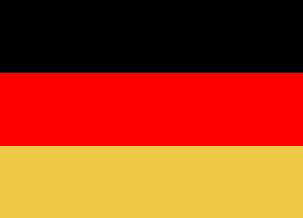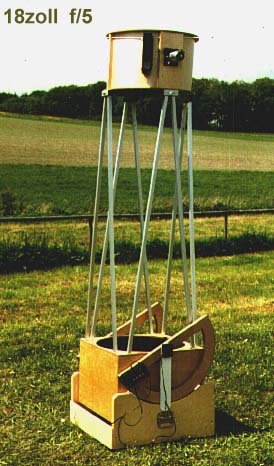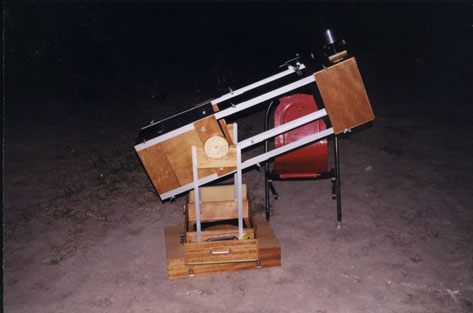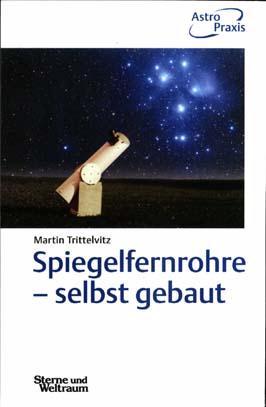 Deutsche
Version .
Deutsche
Version .
.  Deutsche
Version .
Deutsche
Version .
My Telescopes

C11
Fork-mounted
11inch Schmidt-Cassegrain telescope. The mount is a little weak, but
the
telescope works well on my little balcony.
10 inch f/4,8
detachable travel telescope with home-polished 10 inch mirror.
D=254mm
f=1200mm, weight approx. 20 kg. Taken apart and packed into a suitcase
with the dimensions 25*40*50 cm. As a telescope for travel it is a
little
too large and too heavy. However, so far I have had no trouble to
convince the airlines to transport it.

On 30.4.1999 was "first light". The handling of the telescope makes no problems, a short way over a meadow is easy due to the barrow mechanism. On both sides of the Rockerbox two beams are fastened, which are connected with one axle and two wheels in front. So one can raise the rear ends of the beams and shift the entire telescope, without having to work too hard. The whole telescope can be assembled and collimated in just 15 minutes.
Since 1999,
the
telescope has been tested extensively. There are still some mechanical
features that can be improved. Especially the surfaces of the bearings
could be improved. I would like to use glassboard or a comparable
kitchen
surface. These are not common in Germany. The optics is now very good,
after I covered the turned-down-edge. On the ITT (International
Telescope
Meeting) in Austria, I was able to extensively test this
telescope.
I performed the Star test as well as Ronchi test. The optics convince
with
their contrast and good definition. Besides, it is fun to observe deep
sky objects. They no longer appear as dull small spots, but are
comparable
to photographic pictures.
I then was
thrilled
by the great view of Jupiter then. It is one of the best planetary
scope
I ever directed to Jupiter. (Short after the Clark-Refractor in
Flagstaff,
USA)
My efforts in
building this telescope proved to be worthwhile!
Since 1999 I used the 18" extensive for
observing
Deep Sky. I tried to close the gaps in my "Messier Marathon" which goes
over 3 jears now! Aditional I have purchased a Miauchi 20 x 100 for
instant
visiting the Stars.
Back

10 inch f/4,8 detachable travel telescope with
homemade 10-inch mirror D=254mm f=1200mm, weight approx. 20Kg. divided
and packed it transforms into a suit-case with the dimensions 25*40*50
cm. As travel telescope is it already somewhat too big, nevertheless I
had no problems until now to convince the Airlines to transport it.
This
time the telescope is in Bangkok where I left it last year.

The
book: "Spiegelfernrohre-selbst gebaut" is now available:
Verlag
SuW, Spektrum Verlag
ISBN
3-8274-1310-9
My name is Martin Trittelvitz. I am 53 years old and live in Berlin, Germany. After retiring from my profession as a physician in 1990, I have been able to spend more time with my hobby. For the last 11 years I have been a hobby astronomer. First I observed with a small telescope like those you can buy in a shop. But soon, I recognized that it was not sufficient. I looked for more powerful telescopes, but I found them much more expensive than I could afford. So I contacted the Wilhelm-Foerster-Observatory in Berlin. There a course is offered for grinding a telescope mirror. So I was infected with the "mirror virus".
In the meantime I bought and built plenty of telescopes (see above). Actually I have too little time for observing. On the one hand this is based on my location of residence: Observation in the center of the city of Berlin is not very successful because of he light pollution, but leaving town for observation makes a little journey necessary each time. On the other hand this is caused by my various other obligations (family and so on)
Every year you can find me at the ITV, the "International Telescopemeeting Vogelsberg". Info from Intercon-Spacetec Intercon-Spacetec
Contact
E-mail to:martin@marty-atm.de
 TelescopeMaking TelescopeMaking
|
| Next|Previous|Random|ListSites
Next5 |Previous5 |Join |
zuletzt bearbeitet 24.3.2003